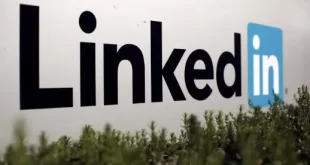The rapid changes in communication technologies and awareness techniques have turned the market for IT on its head. It’s now a constant war of wits between an extremely well informed buyer and a terribly competitive seller. What makes them tick? What’s the strategy that helps the dynamics of better and best take marketing to a whole new level?
With almost 98% of all B2B buyers are doing their homework online before entering the market to buy a product of service, the pressure on sellers to excel is higher than ever before. It’s not just about the product any more. It’s also about the sale and marketing process- for conversations drive this sale.
While digital channels play a big role in helping identify business opportunities, there is now a need for awareness on a single platform- since online is not the only line of communication. Sellers need to ensure that they integrate data from all communication channels to even approach a customer. Online and offline are no more exclusive, they are complementary, and then there is mobile data. Of course, easily accessible online channels are now playing a bigger role than physical selling strategies. And since online and mobile based identifying of products and beginning of the buying process sets certain expectations for the B2B buyer, they expect the same convenience and speed for the entire process. This is the biggest driver for “meeting customer expectations” being the top marketing strategy objective of most IT sellers. How can they do it? Here are some useful ideas
Transparency:
Buyers want complete price transparency upfront. Its hidden costs, unrevealed add-ons and the game of cat and mouse which is designed to make money from niches do not have a place in transactions of the digital age. A couple of years ago, customers had only one source of information. Now, they have the options of consultants, online resources and peer experiences available offline as well as online, so they have absolutely clear understanding of their challenges as well as remedies. With the mammoth amounts of data and expertise available, each enterprise can actually define the solution that will suit them best. So hard sell is now just smart sell. And it demands clarity, transparency and honesty.
Deliver a seamless experience:
In the cacophony of the IT market, those who are willing to create and deliver a seamless experience across channels, offline, online and mobile- as well as personalised communication lines- will benefit. This experience should have a single view partnership of people, processes, technology and products…and will be the real customer support. Omni channel partnerships can share analytical data across geographies, time zones and teams, and be in a position to service the B2B customer instantly, through the entire customer experience journey.
Know Your Buyer:
With increasingly aware markets, the value additions given for B2B transactions will hinge on the value additions given by the sellers. The buyers need specific solutions, to their particular challenges- they are not out to buy a PRODUCT, they are out to buy a solution for their problems. So it’s not about selling anymore, it’s about identifying the challenge and giving a fitted solution to meet it. That solution needs to be packaged in relevant and hitting content, but that’s another line of thought. Content, that used to be king once, is now Emperor. It is now the reason for a crucial business decision to buy a solution for a clear and specific challenge- just so long as it delivers on the value addition. Buyers are pragmatic enough to see through tall promises and faff…they want facts and specifics!
The Digital Advantage
One of the miracles the internet gave the enterprise was the ability for instant and seamless connection. Most organisations are taking huge advantage of this connectivity, specially the digital media part of it, and ensuring that satisfied customers speak for them even better than their marketing team, on social media. But this is now commonplace. The internet of things has taken the marketing experience a step further. There is now the advantage of live connection- products, customers and suppliers can participate live in discussions and even use opportunities that add value to the physical vision – maybe like a Google glasses!
The anywhere, anytime interactivity, the ability to dissipate and disseminate information online, the expectation of customer specific offers (thanks to analytics) and much faster response times – will drive buying decisions of IT B2B buyers going forward. IoT, mobility and analytical tools will play a huge role in this new marketing communication paradigm.
The Next 5 Years
The consumer experience for technology is all set to become more realistic, through virtual and physical means. Driving this will be the ubiquitous mobility and online tools like The NFC (near field communication) chips that can be embedded in phones for exchange of information and experiences. Added to this, the power of analytical tools provides an opportunity to connect with customers at various levels- from completely personalised to vastly generic. The personalised one is what we will need, going forward. Digital technologies that are constantly at work in the behind the scenes of consumer preferences and interaction, will be constantly sharing data with marketers, and this is what will enable the personalisation.
At the same time, making the marketing experience simpler will be critical for B2B marketers, or the din of the market will compromise on customer interest. So, as an example, a complex technology product can be sold with a web overlay, a sort of game where their customers can be invited to pick on choices, and preferences to choose the most suitable product. The options are limitless and technology is a standby. Customised client interfaces add value to a transaction like nothing else does.
In order to get that clarity, technology marketers will need to focus on three types of vision- the telescope vision where knowledge of broad industry and market trends is required. This is hugely supported by digital data gathering, and vendors’ feedback. Then there is the binocular vision which collates and assembles the client requirement and need data with solutions- to provide them a single view of what’s best for them. The microscopic vision will break down every need and purchase decision of the client and offer a completely customised solution. This would perhaps be the culmination of all the activities that a marketing team for a B2B solution does, and applies as much to the IT industry as any other.
Clearly, the strength of marketing lies in conversations that talk of the vendor’s ability to meet the specific demands of a client, as before. So a decade ago, a personalised CRM would take up the process, while today, the job is to be done by the digital and online presence- an amalgamation of virtual and digital experiences that provide complete clarity, as well as offers of best fit. All this is based on the true to life demos, comments, feedback and appreciation from the same market, strengthen the Emperor’s hands- content is still valuable, but placed in a virtual world!
 Latest Technology News Today – Get Latest Information Technology Updates and Services Latest Technology News Today – Get Latest Information Technology Updates and Services
Latest Technology News Today – Get Latest Information Technology Updates and Services Latest Technology News Today – Get Latest Information Technology Updates and Services 









